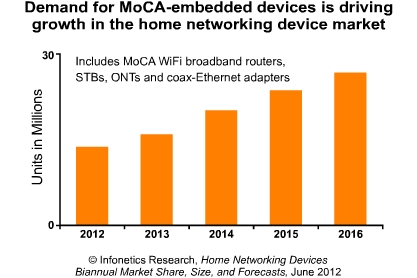The next money-making tech frontier: your home


Technology companies have done a pretty good job recently in making money hand-over-fist for things you can fit in a purse.
The next frontier is...well, a bit bigger.
The phrase "three screens" -- phone, laptop, TV -- gets tossed around quite a bit, but we never focus on that third one as much. Sure, Google TV and Apple TV and a multimedia-friendly Microsoft Xbox exist, but they haven't captured our attention in quite the same way as, say, a smartphone.
That's changing quickly.
Market research firm Infonetics expects consumers worldwide to spend $43 billion on home networking devices over the next five years as tablets and other connected devices (cars! toasters! refrigerators!) make their way into the home.
Leading the way? North America, of course, with 37 percent share of the revenues.
Global sales of home networking devices are already rising, having grown by 20 percent between 2010 and 2011, to $7.98 billion. But Infonetics believes the boom hasn't come yet.
"We expect the demand for broadband peripherals, especially those with integrated MoCA chips, to continue to increase globally as operators in all regions roll out new home automation, energy management, entertainment, and communications services that require high-end networking devices," analyst Jeff Heynen says.
(MoCA stands for "multimedia over coax," or coaxial cable. The standard was established in 2004 and allows audio, video and data to flow through the cable, e.g. via set-top boxes, optical network terminals, Ethernet adapters and routers.)
We've long known that this day was coming; one of the reasons for the recent switch from IPv4 to IPv6 was the expectation that pretty much everything electronic will have an IP address sooner or later. And we've seen increasing interest by consumer technology companies in the living room.
But we haven't spoken about it too much in terms of market opportunity. (Well, we actually have, but there hasn't been a lot of traction so far.) The usual suspects are angling for a piece of this growing pie, including D-Link, Netgear and Cisco.
But as networking equipment converges with appliances, how will this manifest itself? Will your coffee machine be powered by Cisco? Your oven, powered by D-Link? If you want a hint at things to come, watch the automotive space, where connected systems are already emerging as the next major competitive differentiator. Still, it wouldn't surprise me if pure-play networking equipment, at least on the consumer side, eventually goes the way of the dodo -- even as there are more connected devices than ever before.